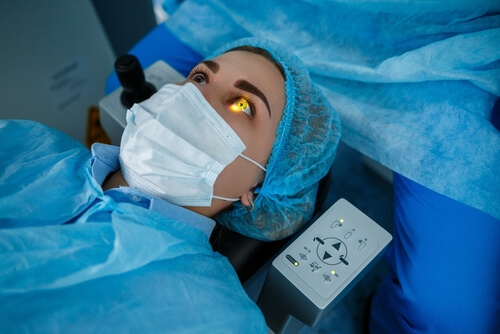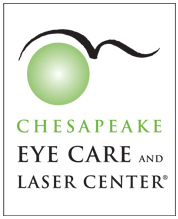What Vision Correction Procedures Are Available?
November 7, 2023
If you have decided you would like to stop relying on prescription eyewear to see clearly, it may be time to consider a vision correction procedure to permanently restore your clear vision. However, with all of the different procedures available today, it can be challenging to know which might be the best one for you.
The best way to know which vision correction procedure may be best for you is to visit your eye doctor for an evaluation. Keep reading to learn which vision correction procedures are available!
LASIK
The most well-known vision correction procedure is LASIK, which is often the first choice for individuals looking to correct their vision. It is the most commonly performed vision correction procedure.
LASIK stands for Laser In-Situ Keratomileusis. It can correct the most common refractive errors: nearsightedness, farsightedness, and astigmatism.

It is a quick procedure, taking approximately fifteen to thirty minutes per eye. During LASIK, an eye surgeon makes a small flap to the outer surface of the cornea.
This flap is then lifted, and the LASIK surgeon is able to reshape the cornea using an excimer laser, permanently correcting the refractive error. The final step of the procedure is the replacement of the corneal flap.
You will likely be able to resume many of your normal activities a day or so after LASIK surgery. While some patients notice improved vision within hours of the procedure, most report fully restored vision within days.
A good candidate for LASIK meets the following criteria:
- They are at least eighteen years old with healthy eyes and no history of eye disease
- They have had a consistent eye prescription for at least six months
- Their eye prescription is within a certain range
- Their corneas are thick enough
PRK
Photorefractive Keratectomy, or PRK, is another possible vision correction procedure. This may be a good option for individuals who are not good candidates for LASIK.
Like LASIK, it can be used to correct nearsightedness, farsightedness, and astigmatism.

While both LASIK and PRK use a laser to reshape the cornea, they employ different means to access the corneal tissue. In a PRK procedure, a laser is used to gently remove the outermost layer of the cornea, the epithelium, after which an excimer laser is used to reshape the cornea to correct the refractive errors.
The final step in a PRK procedure is the application of a special contact lens, which acts as a bandage. This bandage covers the cornea and protects it as the epithelium regrows.
Because of the regrowth of epithelium, the recovery time following a PRK procedure is usually longer than for LASIK. While immediate recovery time usually lasts between three to five days, it can take over three months for the epithelium to fully regrow.
To be considered a good candidate for PRK, an individual should be over eighteen years of age with healthy eyes and have an eye prescription with a certain range that has been stable for at least six months.
SMILE
SMILE, which stands for Small Incision Lenticule Extraction, is one of the most advanced vision-correcting procedures available today. This procedure is less invasive than LASIK and PRK but can only be used to correct a single refractive error: myopia or nearsightedness.
During SMILE eye surgery, your eye surgeon first creates a tiny incision on the surface of the cornea using a femtosecond laser. The surgeon then utilizes the precision of the femtosecond laser to cut out and separate a disc-shaped layer of tissue within the cornea, known as a lenticule.
Once this lenticule has been successfully formed inside the cornea, the surgeon extracts and removes it through the original small incision made at the beginning of the procedure. With the lenticule taken out, the cornea is reshaped, allowing light to focus properly on the retina to correct nearsightedness and improve uncorrected vision.

The minimally invasive nature of SMILE eye surgery offers benefits like quicker recovery times compared to other refractive procedures. Good candidates for SMILE are at least twenty-two years old and have had a stable eye prescription for at least a year.
It's also important to have an eye prescription that falls within a certain range and have healthy corneas. SMILE may not be recommended for individuals with scars on their corneas, unmanaged diabetes, or certain eye conditions, including glaucoma and cataracts.
Refractive Lens Exchange
Refractive Lens Exchange, which is commonly known as RLE, is yet another procedure that can reduce or even eliminate an individual’s dependence on glasses or contact lenses for clear vision. RLE can make permanent vision correction possible for individuals with extreme nearsightedness, farsightedness, or astigmatism.

While LASIK, PRK, and SMILE are somewhat similar procedures, RLE uses a whole different method of vision correction. Instead of reshaping the cornea, a RLE procedure involves removing and replacing the natural lens of the eye.
The first step in RLE surgery is the removal of the natural lens of the eye. The lens is then replaced with an artificial intraocular lens or IOL.
Depending on the IOL chosen, these artificial lenses can correct vision at one, two, and even three distances! An RLE surgery can be the best vision correction choice for individuals with extreme refractive errors or for individuals with corneal abnormalities.
While correcting vision with RLE can be an elective procedure, it is also used to treat cataracts and will prevent future cataracts from developing.
To be considered a good candidate for RLE, you should have a stable eye prescription for at least six months and no history of eye disease.
Opting for an RLE procedure may not be suitable for individuals with an eye disease that affects the corneas, who have a higher-than-average risk for retinal detachments, or who have age-related macular degeneration or diabetes-related retinopathy.
Whether it’s LASIK or SMILE, PRK or RLE, the best way to decide which of these procedures is best for you is to schedule a consultation with one of the experienced and knowledgeable eye care providers at Chesapeake Eye Care and Laser Center! No matter what procedure is right for you, our dedicated team is here to help you have the clearest, crispest vision possible!
Are you interested in learning more about which vision correction procedure may be right for you? Schedule an appointment at Chesapeake Eye Care & Laser Center in Annapolis, MD, today!



